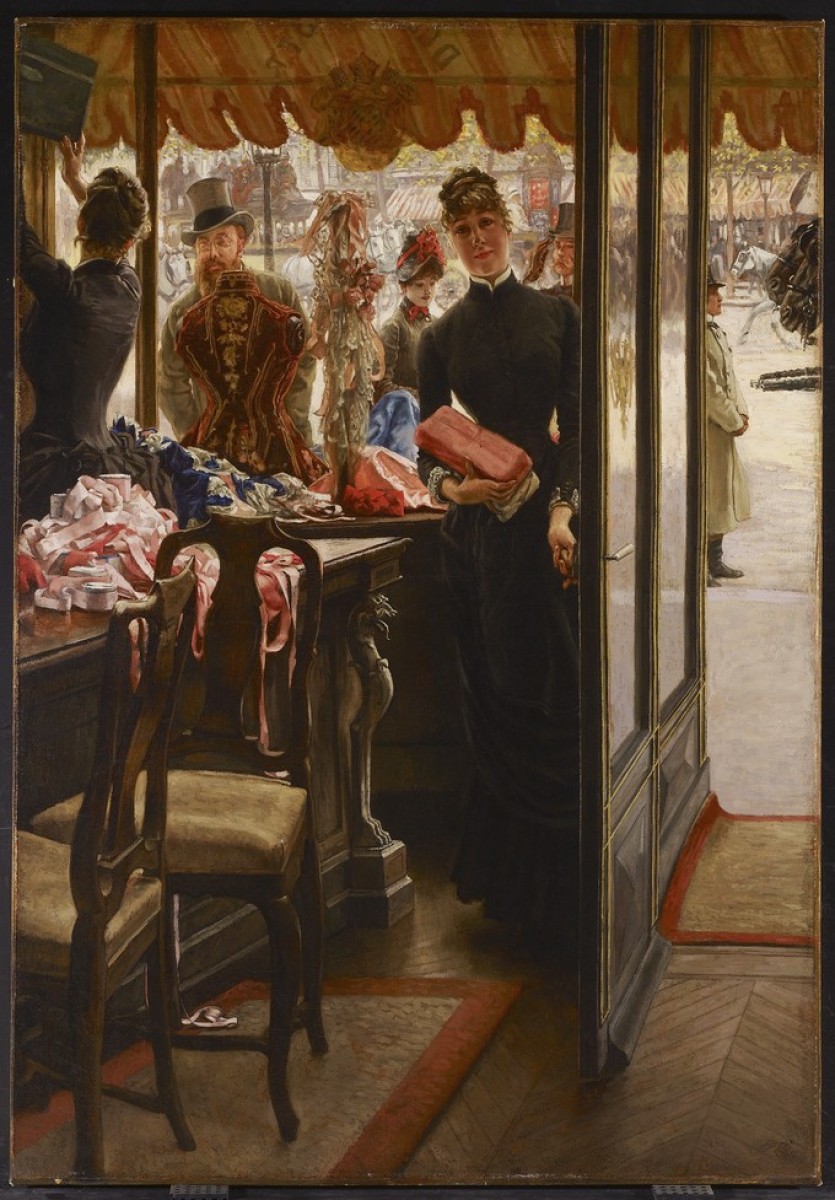The Shop Girl is back in town

James Tissot. La Demoiselle de magasin, c. 1883-1885. Oil on canvas, 146.1 x 101.6 cm. Gift from Corporations' Subscription Fund, 1968. Image © 2017 Art Gallery of Ontario.
To cap off an exciting 2017, we looked back at some of the highlights of the European reinstallation on Level 1 of the AGO as part of Look:Forward. Another painting that recently returned to the European gallery walls is French Impressionist painter James Tissot’s charming The Shop Girl (1883–1885) – now on view for the first time in five years.
It’s hard not to be captivated by The Shop Girl as she holds open the door and gives us a polite smile, as we, the viewer-turned-customer, exit the shop. Outside on the street, we see the life of Paris unfold.
Window-shopping was a new leisure activity made possible by a major rebuilding project that took place in Paris from the 1850s to the 1870s. This period gave birth to the wide-open boulevards that Paris is famous for today, seen in the background of the painting. The sidewalks, street lamps and the technology used to create large glass windows paved the path for Parisians to stroll leisurely through this radically new city. The woman in the black hat and red ribbons in the background partakes in window-shopping, while at the same time demonstrating how ribbons in the shop would have been worn. A particularly neat detail is that the ribbon that has fallen to the floor lies in a soft heart shape. Only Tissot knows what that means.
In shops like this one, wealthy and working-class Parisians converged. Tissot’s parents were merchants in the textile and fashion industry, which could account for the intimate, personal depiction of the two women at work.
The painting recently returned from St. Louis and San Francisco where it appeared as part of the exhibition, Degas, Impressionism, and the Paris Millinery Trade. The research from that exhibition has helped us better understand this painting in its historical context, and it has spurred research on the artist’s painting techniques, which we will further study in the Conservation department here at the AGO.
Here’s Caroline Shields, Assistant Curator, European Art talking about the work on Facebook Live.
Are you an AGOinsider yet? If not, sign up to have stories like these delivered straight to your inbox every week.
